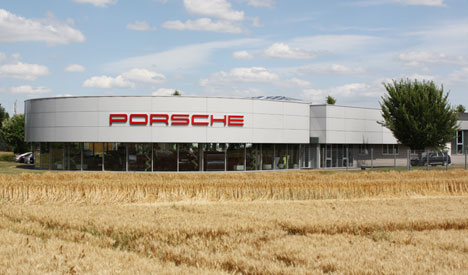

This drivetrain construction was easily expanded to four-wheel drive, by mounting two more electric motors to the rear wheels, and a four-motor example was ordered by Englishman E. The Egger–Lohner was a carriage-like car driven by two electric motors within the front wheel hubs, powered by batteries. Their first design - unveiled in Vienna, Austria, on 26 June 1898 - was the Egger–Lohner vehicle (also referred to as the C.2 Phaeton). Jakob Lohner had begun construction of automobiles in 1896 under Ludwig Lohner in the trans- Danubian suburb of Floridsdorf. In 1897 or 1898, Porsche joined the Vienna-based factory Jakob Lohner & Company, which produced coaches for Emperor Franz Joseph I of Austria as well as for the monarchs of the UK, Sweden, and Romania. Early career The Lohner–Porsche Mixte Hybrid In 1934, either Adolf Hitler or Joseph Goebbels made Porsche a naturalized German citizen. Birth house of Ferdinand Porsche in Vratislavice nad NisouĪfter the breakup of the Austro-Hungarian Empire at the end of World War I, he chose Czechoslovak citizenship. During his five years with Béla Egger, he built their first electric wheel-hub motor, the concept for which had been developed by American inventor Wellington Adams, and Porsche also raced it, in 1897. Besides attending classes there, Porsche did not complete any formal engineering education. While working in Vienna, he enrolled as a part-time student at what is now the Vienna University of Technology, and went there whenever he could after work.

Electrical company in Vienna (later Brown Boveri, now ABB), and moved there in 1893, at the young age of 18.

Thanks to a referral, Porsche landed a job with the Béla Egger & Co. He was already attending classes at the Imperial Polytechnical College in Reichenberg ( Czech: Liberec - some 5 km (3 mi) from his home) at night, while still helping his father in his mechanical shop by day. įerdinand showed a great aptitude for technology and was especially intrigued by electricity from a young age. Porsche was inducted into the International Motorsports Hall of Fame in 1996 and was named the Car Engineer of the Century in 1999.įerdinand Porsche was born to Anna Porsche (née Ehrlich) and Anton Porsche, in Maffersdorf (Vratislavice nad Nisou) in northern Bohemia, part of Austria-Hungary at that time, and today part of the Czech Republic. He was a recipient of the German National Prize for Art and Science, the SS-Ehrenring and the War Merit Cross. Porsche was a member of the Nazi Party and an officer of the Schutzstaffel (SS). He is best known for creating the first gasoline– electric hybrid vehicle ( Lohner–Porsche), the Volkswagen Beetle, the Auto Union racing cars, the Mercedes-Benz SS/SSK, and several other important developments and Porsche automobiles.Īn important contributor to the German war effort during World War II, Porsche was involved in the production of advanced tanks such as the VK 45.01 (P), the Elefant (initially called "Ferdinand") self-propelled gun, and the Panzer VIII Maus super-heavy tank, as well as other weapon systems, including the V-1 flying bomb. German National Prize for Art and Science (1938)įerdinand Porsche (3 September 1875 – 30 January 1951) was an Austro-Bohemian automotive engineer and founder of the Porsche AG. Mercedes-Benz SS/SSK, Tiger I, Tiger II, the Elefant, Panzer VIII Maus and the Volkswagen Beetle


 0 kommentar(er)
0 kommentar(er)
